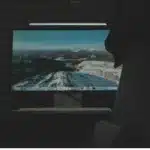5 Mistakes to Avoid When Converting Negatives to Digital Photos

Do you have old photo negative archives of your business? It is time to go digital. However, when they are converted to digital in an improper manner, it can result in poor quality of images, loss of details, or records.
Whether you are doing in-house negatives to digital conversion or outsourcing to a negative scanning service, errors during the process may cost you time and data. This is why it is important to know what not to do prior to it.
Professionals who offer and convert negatives to digital services will help maintain image fidelity and simplify digital storage. Whether it is a wrong resolution or a mismatch in file formats, this guide covers the main pitfalls that businesses can experience in the process of transferring negatives to digital formats.
We will discuss the pitfalls and provide the best practices so that you can comfortably convert negatives to digital photos and preserve your visual assets in the long-term.
1. Incorrect Scanning Resolution
One of the most frequent mistakes of negative digitizing is scanning at the incorrect resolution. When you have thousands of images to go through, it is tempting to scan at a low DPI (dots per inch) quickly. However, this quick fix may be counterproductive in the future.
A low-resolution scan may appear good on the monitor, but it will look grainy when printed or zoomed. It is usually the cause of blurred or pixelated files, particularly when digital images are required to be used in presentations, delivered to clients, or published. The correct resolution to have your negatives scanned depends on your needs, though a minimum of 2000 DPI is recommended. Scanning at higher resolution such as 3000 or 4000 DPI ensures that even more data is captured and offers more flexibility when it comes to printing and editing.
Professional Negative Scanning Services are aware of these requirements and adapt to them. They provide scalable solutions where the clarity of the image is balanced with file size. When you are archiving images to be used over a long period, or you require flexibility in printing, then you should always use higher-resolution scans. It is a minor investment that is worth it in terms of quality.
2. Not Cleaning and Preparing Negatives
Negatives are delicate. A single fingerprint or very small dust particles can ruin your scan. So, it is important to clean every negative well before scanning. This would involve the use of anti-static cloths, air blowers, and lint-free gloves when handling film.
Failure to do this may result in smudges, streaks, and shadows that are difficult to eliminate later, particularly in high resolution scans when every detail is important.
Seasoned Negative Scanning Services do not merely digitize; they pre-process. Each strip is cleaned and checked by professionals to achieve the most successful outcomes. This preparation work is a significant difference, particularly when you are going through archival records, scientific records, or a bulk of films that are meant to be used in business. Clean film means clean results.
3. Wrong File Format
JPEGs are wonderful to look at and send as they are small and can be used on almost every platform. However, they are compressed, and therefore, some data from the image is lost in the process of saving.
TIFF is the superior option in case you intend to edit, improve, or store your files over the next few years. TIFF files save all the image information, which is why they are used when restoring and color-correcting images, as well as in high-quality printing. The downside? They are huge, and storage accumulates quickly.
The best negative scanning services provide JPEG and TIFF. A quality provider will advise you according to your needs, be it a working file to use in marketing or high resolution archive that can be used in long term storage. Negative scanning is not a universal thing.
4. Color Correction and Restoration Issues
Negatives wear out. Colors fade, contrasts are lost, and uneven tones are left due to chemical wear. Just scanning the image as it is will not revive it. This is more so when it comes to older film formats such as 110 or medium format negatives, which can sometimes need additional handling.
Missing out on post-scan adjustments may leave you with boring, inaccurate images that are not sufficient to brand, document, or preserve as history. That is why color correction and restoration are the necessary steps during any professional convert-negatives-to-digital process.
An expert technician can correct exposure, balance color, and sharpen faded spots–even to the point of the images looking better than the originals. It is a valuable step to add to businesses that deal with product archives, visual branding assets, or historical materials. Negative Scanning Services that are included with built-in restoration or optional enhancement packages are an investment worth making when quality is of primary importance.
5. DIY Approaches
Do-it-yourself scanning may appear as a way to save money, but it may not appear so when the results are received. A smartphone or simple flatbed scanner will suffice in a pinch, but they do not contain the tools to do high-quality negative scans.
Apps on smartphones can usually have issues with focus, lights, and resolutions. Entry level scanners might lack the film holders or a proper source of light to reproduce depth and detail. The result? Lack of balance in the lighting, faded pictures, and lack of sharpness. This can be acceptable as a personal video, but not as a professional presentation, materials presented to clients, or historical records.
When a business wants to digitize large archives, particularly 35mm negatives scanned at scale, it may be worth outsourcing to a Negative Scanning Service that specializes in the work. They possess the appropriate equipment, skilled technicians, and processes to ensure they can take care of volume and quality simultaneously.
Conclusion
Negative to digital conversion is not just a simple scan, but it involves precision, proper tools, and a keen eye. Saving money may cause hazy pictures, lost information, and squandered energy. Quality is always important, whether you are dealing with old archives or new collections.
It makes a big difference to choose a service that knows the specifics of 35mm negatives scanning and the peculiarities of 110 negatives scanning service needs. Varying formats require different devices and resolutions. A one-size-fits-all just does not cut it when running a visual-based business.
In the case of companies working with historical assets, product photography, or editorial images, professional medium & large format negatives scanning guarantees that you do not miss a single detail. Rely on a scanning partner that will do it right the first time, since once you digitize, those files become your new master files.

6 Tips To Unlock New Business Opportunities With My Aged Care Registration

The Hidden Business Power of Storytelling Through Books

Diamond Painting Apps & Digital Tools for 2025 Artists

Accelerating drug discovery through the DEL-ML-CS approach

AI in Marketing Is No Longer a Buzzword — It’s the Strategy

Benefits of Working with a Bathroom Remodeling SEO Company

The Full Guide To Penetration Testing

Pixel 10 Pro Fold Case: Why Choose Aramid Fiber?








